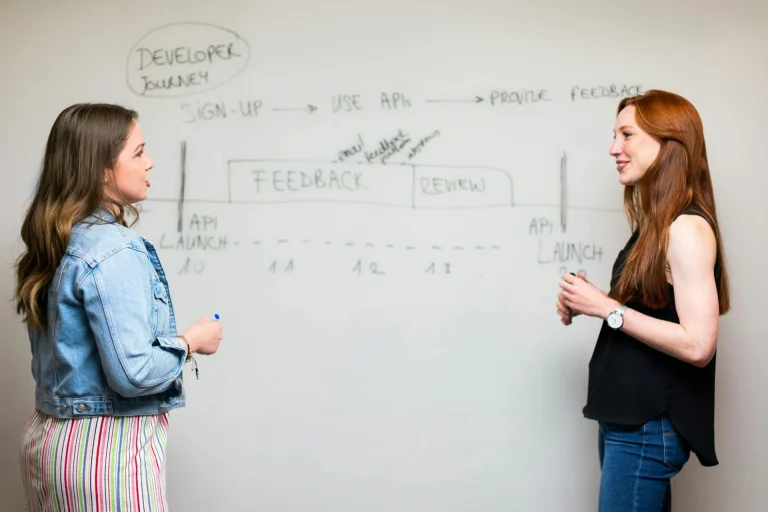Launching a WordPress site is one of the most exciting—and daunting—moments for anyone serious about their digital presence. Whether you’re building your first website or reimagining your business online, WordPress is often the go-to choice for its flexibility, scalability, and friendly learning curve. But as someone who’s seen more behind-the-scenes WordPress struggles than I can count, I can promise you: it’s dangerously easy to fall into some costly traps.
Let’s walk through 6 common mistakes I see when people set up a WordPress site—and how you can sidestep them, starting right now.
1. Overlooking Security Basics
Let’s get this out of the way: WordPress is not insecure by default. But it is popular—which means it’s a big target for hackers, bots, and all sorts of bad actors. The single biggest mistake? Skipping security steps, often with a “It won’t happen to me” mindset.
What does this look like in practice?
- Using
adminas your username (it’s the first one hackers will try) - Settling for weak passwords because they’re easy to remember
- Forgetting to update WordPress core, plugins, and themes
- Installing plugins from untrusted sources
- Skipping backups altogether
Why is this such a problem?
Because once your site is compromised, recovery is time-consuming, stressful, and always expensive. Search engines may blacklist you, and your visitors’ trust is hard to rebuild.
How to avoid it:
- Always use a unique username (never
admin) and a strong, randomly generated password. - Set up two-factor authentication (2FA) for your login.
- Only install plugins and themes from trusted sources—ideally from wordpress.org or reputable developers.
- Keep everything updated. Turn on automatic updates where it makes sense.
- Set up a reliable backup solution that runs daily (and test it, so you know it works).
- Install a reputable security plugin to monitor suspicious activity and protect against brute-force attacks.
WordPress security is never “done”—it’s ongoing. Get the fundamentals right, and you’ll sleep much better at night.
2. Ignoring Site Performance (Until It’s Too Late)
Speed matters, both for your visitors and for Google. Yet “performance” is often something people only think about after complaints start rolling in or rankings tank. A slow site frustrates users, increases bounce rates, and can drag down your SEO. And in WordPress, it’s often death by a thousand cuts.
Common performance mistakes:
- Choosing cheap, generic shared hosting (“It’s only €3/month!”)
- Uploading massive, unoptimized images
- Relying on bloated, all-in-one themes or page builders without restraint
- Installing dozens of plugins “just to try them out”—and never cleaning up afterward
- Ignoring caching and Content Delivery Networks (CDNs)
Why does this matter?
Today’s users expect your site to load in under two seconds. Every second of delay means lost conversions and lower engagement. Google now uses site speed as a ranking factor, especially on mobile.
How to avoid it:
- Invest in quality hosting. There’s a world of difference between basic shared hosting and a properly optimized WordPress server.
- Always resize and compress images before uploading. Plugins like Admin and Site Enhancements (my personal choice) ShortPixel can help automate this, but start with good habits.
- Choose a well-coded, lightweight theme—and avoid unnecessary bells and whistles.
- Keep plugins to a minimum. If you’re not using one, deactivate and delete it.
- Set up a caching solution like FlyingPress (affiliate link) and combine it with built-in cache from quality hosts.
- Use a CDN like Cloudflare if your audience is international or nationwide.
Test your site regularly with tools like Google PageSpeed Insights or GTmetrix. Don’t wait until your site feels slow—by then, you’re already losing visitors.
3. Making Bad Plugin Choices (and Letting Them Pile Up)
Plugins are one of WordPress’s superpowers, but they’re also one of its biggest liabilities when used carelessly. The temptation is real: Need a new feature? There’s a plugin for that. Need a different contact form? Try three and see which you like. Before you know it, you’ve got 25 plugins, half of them barely used, and no idea what’s happening behind the scenes.
Why does plugin overload matter?
- Every plugin is a potential security risk, especially if it’s not regularly updated.
- Too many plugins can conflict, causing bugs and mysterious errors.
- Each one adds to your site’s resource load, slowing things down.
- Abandoned plugins may suddenly break with a new WordPress update.
Classic plugin mistakes:
- Installing plugins from unknown or unverified sources
- Using multiple plugins for the same purpose (e.g., three SEO plugins fighting for control)
- Not updating or maintaining plugins
- Ignoring plugin reviews and update frequency before installing
How to avoid it:
- Be ruthless: If you’re not actively using a plugin, remove it. Don’t just deactivate—delete.
- Check how recently a plugin was updated before installing. If it hasn’t been touched in a year, that’s a red flag.
- Only install what you actually need. Less is more.
- Favor plugins with a strong track record and active support.
- Document what each plugin is for, so you don’t forget why you installed it.
Remember: Plugins are tools, not collectibles. Every one you add should have a clear purpose.
4. Neglecting Mobile Optimization
It’s easy to fall in love with your site on a big desktop monitor, but most visitors today are coming from their phones. A site that looks great on desktop but falls apart on mobile is a conversion killer.
Common mobile mistakes:
- Using page builders that aren’t truly responsive
- Not testing navigation or forms on smaller screens
- Overusing large images and fancy effects that slow down mobile loads
- Ignoring touch targets—tiny buttons are hard to tap
How to avoid it:
- Always preview your site on real devices, not just emulators.
- Use a mobile-friendly theme and test all critical flows (navigation, contact, checkout) on various screen sizes.
- Optimize images and consider mobile-specific layouts for key pages.
- Make sure clickable elements are large enough to tap easily.
Mobile isn’t an afterthought—it’s the main event for most visitors.
5. Forgetting About Ongoing Maintenance
Building a WordPress site isn’t a one-and-done project. Sites that aren’t regularly maintained become slow, vulnerable, and eventually unusable. The biggest mistake is treating your launch day as the finish line.
What ongoing maintenance should look like:
- Weekly or monthly plugin and theme updates
- Regular security scans
- Daily or weekly backups (stored offsite)
- Database optimization and cleanup
- Reviewing analytics and making improvements
You can handle this yourself, or work with a professional who offers WordPress care plans. Either way, don’t skip this step.
6. Poor SEO Foundations
No matter how beautiful your site is, if nobody finds it, what’s the point? Common SEO mistakes include skipping keyword research, neglecting metadata, and failing to structure content for search.
Avoid these traps:
- Forgetting to set custom page titles and meta descriptions
- Overusing generic headings like “Home” or “Welcome”
- Not setting up a sitemap or submitting it to Google Search Console
- Ignoring internal linking
Get the basics right early on, and you’ll see long-term dividends.
The Bottom Line
WordPress is an incredibly powerful platform—but it’s not magic. The most common mistakes come down to neglecting the basics: security, performance, sensible plugin management, mobile usability, ongoing care, and a little SEO love.
If you’re feeling overwhelmed or unsure about any of these steps, don’t hesitate to reach out. My job is to help you skip the headaches and launch a site that’s secure, lightning-fast, and built to grow with you.
Building a WordPress site the right way is an investment—not just in technology, but in the future of your business. Take the time to do it right, and you’ll thank yourself every single day.
Need a hand with your next WordPress project? Explore my complete WordPress Site Solutions





